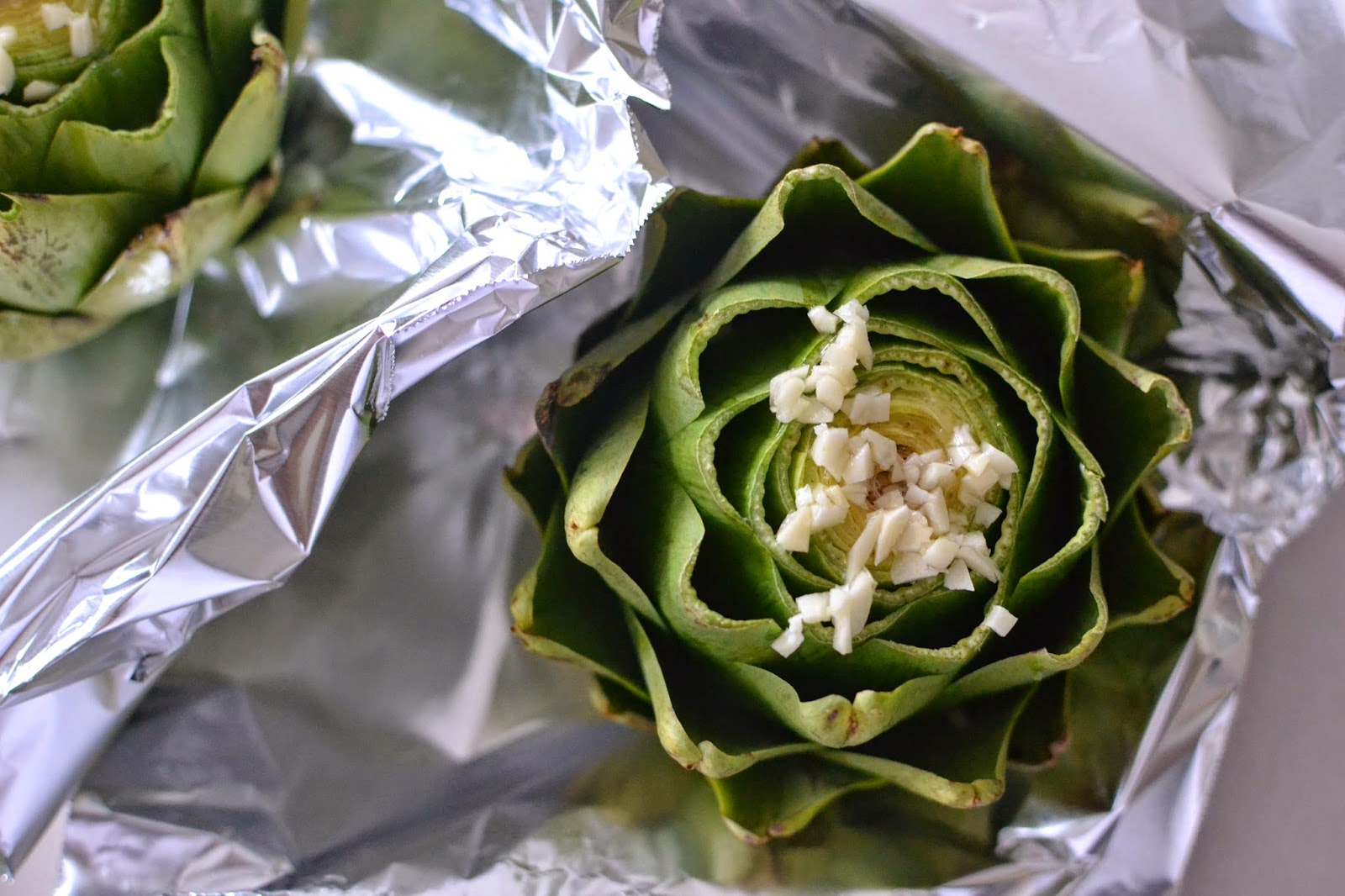"At least you"ll never be a vegetable, even artichokes have hearts"
- Amelie
Since one of my favorite movies came out, I have always been stuck with deciphering the meaning of artichokes having heart. Being a French movie, at the time I found this mild flavor and intricate vegetable very exotic. I thought only those who are like Amelie, living in a fantasy land would have the luxury to have artichokes.
A few years later, artichokes (the canned ones, that it) start appearing on pizza, salads, pasta...etc. Now, seems to creep into the big chain super market like pomegranate once did. There seems to be a serge of marketing for new fruits and vegetables. It's crazy to say, but I have not had a fresh artichoke until last week.
From one of my podcasts (Splendid Table), I learned what you should look for when choosing artichokes:
- Leaves that are tightly packed (unlike what I had), bit of brown spots is fine.
- Hold the artichoke next to your ear and squeeze the artichoke. Yes squeeze. It should squeak, like squeaky fresh cheese curds.
- Of course, no visible damages/molds etc...
Artichokes have two prime seasons, one early spring and another late summer. At a dollar piece, it's a new vegetable worth while to try. After buying these two artichokes weeks earlier, I finally took them out from the back of the refrigerator and baked them.
To cook artichokes, cut the top fourth portion off and trim the bottom stem. You want to cut off the top enough to see some purple. So more than what I did. Spread the leaves apart. Sprinkle the top with fresh juice of one half lemon, minced garlic, salt and drizzle with some olive oil. Wrap the artichokes in foil and bake for 40-60 minutes at 425 degrees. Mine were done at 40 minutes.
You can also steam or boil artichokes. Boil these babies in water with salt and acid (vinegar, lemon juice) to prevent darkening.
To enjoy artichoke, remove each leave and dip in garlicy butter sauce. Scrape the leave between your teeth for the flesh. Discard the flesh. The artichoke heart is in the middle, cut it open and scoop out the fuzzy part. Enjoy the heart!
As a dietitian, I always tell people to try new foods especially vegetable. Artichokes have a mild flavor that I think most people would enjoy. The prepping and eating may be something new, but it's worth the adventure!
























